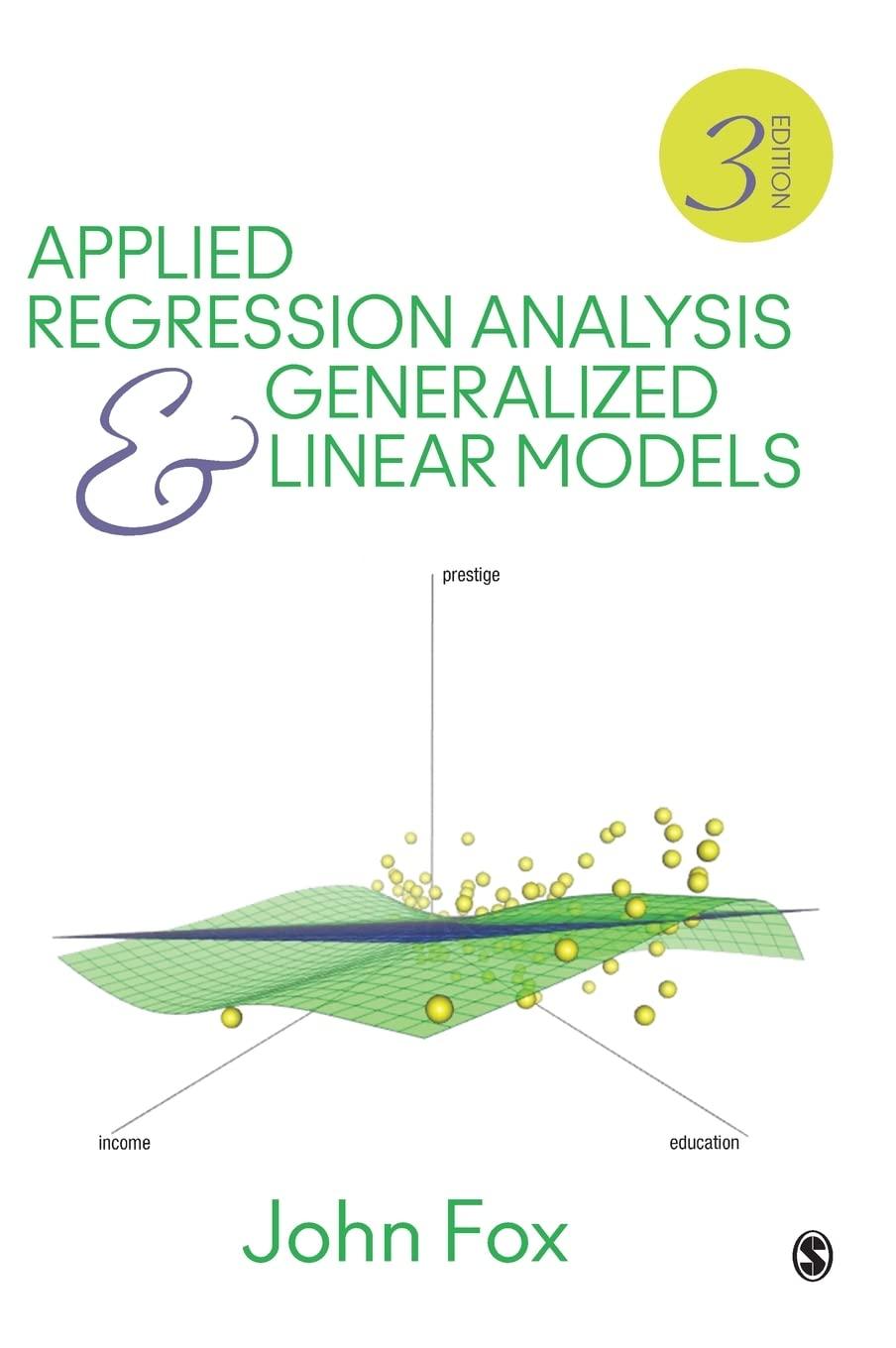Consider the general multiple-regression equation Y A B1X1 B2X2 *** BkXk E An
Question:
Consider the general multiple-regression equation Y ¼ A þ B1X1 þ B2X2 þ***þ BkXk þ E An alternative procedure for calculating the least-squares coefficient B1 is as follows:
1. Regress Y on X2 through Xk , obtaining residuals EYj2 ... k .
2. Regress X1 on X2 through Xk , obtaining residuals E1j2 ... k .
3. Regress the residuals EYj2 ... k on the residuals E1j2 ... k . The slope for this simple regression is the multiple-regression slope for X1, that is, B1.
(a) Apply this procedure to the multiple regression of prestige on education, income, and percentage of women in the Canadian occupational prestige data, confirming that the coefficient for education is properly recovered.
(b) The intercept for the simple regression in Step 3 is 0. Why is this the case?
(c) In light of this procedure, is it reasonable to describe B1 as the ‘‘effect of X1 on Y when the influence of X2; ... ; Xk is removed from both X1 and Y’’?
(d) The procedure in this problem reduces the multiple regression to a series of simple regressions (in Step 3). Can you see any practical application for this procedure?
(See the discussion of added-variable plots in Section 11.6.1.)
Step by Step Answer:

Applied Regression Analysis And Generalized Linear Models
ISBN: 9781452205663
3rd Edition
Authors: By John Fox





